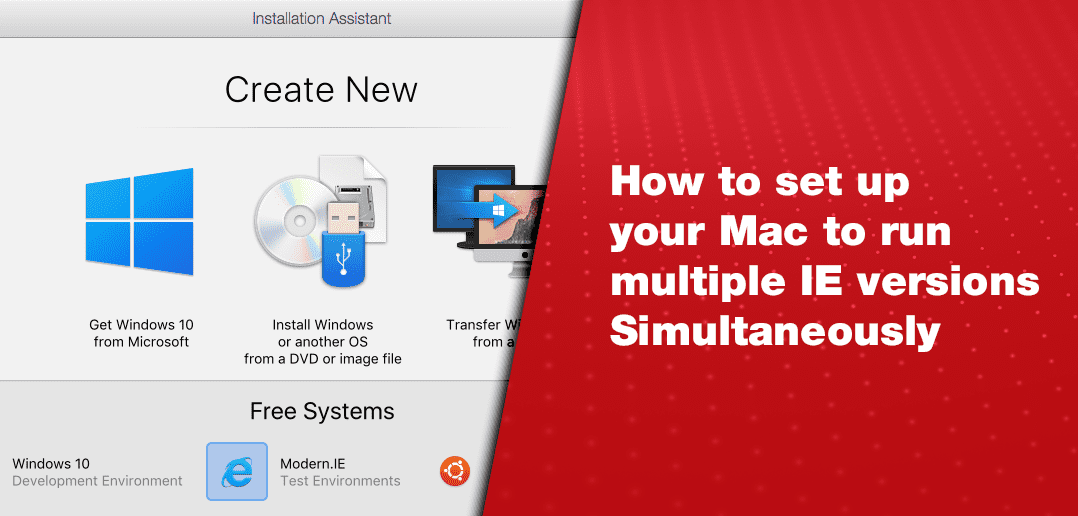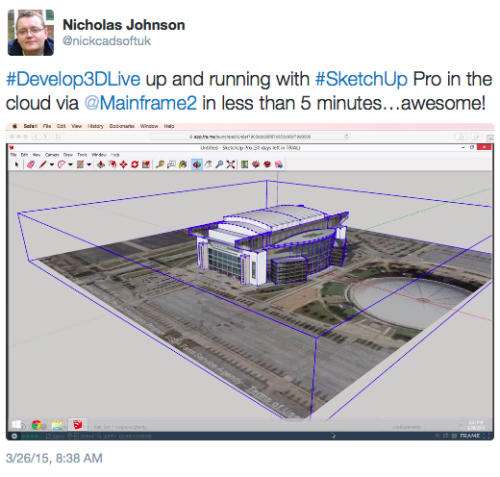Q. Why run Autodesk Revit on a Macbook Pro?
Solution: Autodesk Revit Architecture 2010 & 2011, Revit MEP 2010 & 2011, and Revit Structure 2010 & 2011 are supported running on a Windows partition of an Apple computer using Boot Camp to manage a dual OS configuration.
Answer: I like the MacBook Pro hardware, which is the main reason why I also want to run my primary professional applications on it. In fact, I 'run' Revit on my MacBook Air as well; read on...
- While Inventor or Revit does not currently have a native Macintosh version, you can still install Revit and Inventor on a Mac in virtualized environments including Parallels Desktop and VMware Fusion. We also support these products via Boot Camp, part of Mac OS X that lets you install and run Windows (and Windows-based applications) on a Mac.
- There is a good discussion of this topic on the following Revit Idea thread and if you would like to see a native Macintosh version of Revit you can vote up this idea: Revit for Mac Forum threads on this topic: Best windows version for Revit on Mac Re: Running on Mac Revit on Mac (Boot camp) vs PC Revit 2018 Sluggish in Parallels on New iMac.
Revit using Bootcamp
How to install Revit on a Mac NOTICE: It is HIGHLY RECOMMENDED that you are on at least Mac OSX Sierra (10.12) with 8 GB memory (RAM) and 100 GB of storage (hard drive) to reduce problems with the VM This process will take a while and computer should be left on and awake. My users 'need' to use Macbook Pro while traveling (for some Mac native apps) and also have to run design software (AutoCAD & Revit). First thing to consider is the specs of the MBP you would.

As many have known for years, for running Revit natively on Mac hardware, booting directly in to a Windows partition is the best in terms of performance. That is to be expected as you are simply using the Mac hardware as a high end PC. You however give up the Mac OS X goodness in doing so.
Revit using Virtual Machines
My article will focus on this section as I have done some research on the subject, and have results to share. My users 'need' to use Macbook Pro while traveling (for some Mac native apps) and also have to run design software (AutoCAD & Revit).
First thing to consider is the specs of the MBP you would select for this purpose.
I recommend buying the 15” MBP with a 'Discrete Graphics' card.
These models also have larger L3 cache, and Revit performance is sensitive to its size. You will also take advantage of the better specs running Revit using Bootcamp.
For our virtualization setup, I went with VMware Fusion over Parallels due to a slight edge in graphics performance.

Hardware considerations:
- Max out the RAM to 16GB when ordering the MBP
- Get the MacBook Pro with discrete video card - only available on 15” models with the Radeon R9 (2GB vRAM)
- For models with IG (integrated graphics), do consider the fact that the Video RAM will be taken out from the physical RAM. So, if you allocate 8GB RAM to the Virtual Machine, plus 1GB Video RAM, you have effectively taken away 9GB from the 16GB RAM (leaving only 7GB for the Mac OSX side!)

Virtual Machine settings:
- Allocate only 2 CPUs to the VM (For the most part, Revit only utilizes a single processing core at a time, though there are some tasks where multiple cores could be utilized).
- Allocate a max 50% RAM to the VM (8GB, if physical RAM is 16GB)
- Similarly, allocate a max 50% Video RAM to the VM
- For running 3D programs in the virtual environment, use DirectX (10 or 9) from the 3D acceleration menu, and install the VM Tools in Windows OS.
Note: see Parallels Performance Recommendations

Revit in the cloud (accessed via web browser)
Using Fra.me technology, you could access any Windows application running in the cloud from multitude of devices capable of running a modern browser.
The download speeds were amazing, since data exchange is directly between Frame and Autodesk servers. I was able to install Revit 2017 (without the Medium Material Library) in under 6 minutes!
Fra.me utilizes virtualization technology in the cloud and the VM's are running Windows Server 2012 R2.
My verdict after a quick trial - it's very doable, if you are well served by a high speed connection.
Do a trial, and when you are ready, do pick a pricing plan which allows for GPU usage to run Revit.
Run Revit using Remote Desktop (RDP)
This is a best option for me since I love to travel light. I just carry my MacBook Air and use the Microsoft provided 'app' Remote Desktop. If the wireless connectivity is sufficient, I can easily remote into my workstation and utilize the Revit installation remotely. Since I have the office VPN setup, I can do the same when outside the office.
Do remember to carry at least a standard two button wheel mouse, no matter which option you pick for running Revit on a MacBook Pro!
In all of the above scenarios, consider the licensing costs. Both Windows OS and Revit license will be needed in Bootcamp, VM and Fra.me options.
The RDP option will not consume any extra licenses... Best of Luck!
Q. Why run Autodesk Revit on a Macbook Pro?
Answer: I like the MacBook Pro hardware, which is the main reason why I also want to run my primary professional applications on it. In fact, I 'run' Revit on my MacBook Air as well; read on...
Revit using Bootcamp
As many have known for years, for running Revit natively on Mac hardware, booting directly in to a Windows partition is the best in terms of performance. That is to be expected as you are simply using the Mac hardware as a high end PC. You however give up the Mac OS X goodness in doing so.
Revit using Virtual Machines
My article will focus on this section as I have done some research on the subject, and have results to share. My users 'need' to use Macbook Pro while traveling (for some Mac native apps) and also have to run design software (AutoCAD & Revit).
First thing to consider is the specs of the MBP you would select for this purpose.
I recommend buying the 15” MBP with a 'Discrete Graphics' card.
These models also have larger L3 cache, and Revit performance is sensitive to its size. You will also take advantage of the better specs running Revit using Bootcamp.

For our virtualization setup, I went with VMware Fusion over Parallels due to a slight edge in graphics performance.
Hardware considerations:
- Max out the RAM to 16GB when ordering the MBP
- Get the MacBook Pro with discrete video card - only available on 15” models with the Radeon R9 (2GB vRAM)
- For models with IG (integrated graphics), do consider the fact that the Video RAM will be taken out from the physical RAM. So, if you allocate 8GB RAM to the Virtual Machine, plus 1GB Video RAM, you have effectively taken away 9GB from the 16GB RAM (leaving only 7GB for the Mac OSX side!)
Virtual Machine settings:
- Allocate only 2 CPUs to the VM (For the most part, Revit only utilizes a single processing core at a time, though there are some tasks where multiple cores could be utilized).
- Allocate a max 50% RAM to the VM (8GB, if physical RAM is 16GB)
- Similarly, allocate a max 50% Video RAM to the VM
- For running 3D programs in the virtual environment, use DirectX (10 or 9) from the 3D acceleration menu, and install the VM Tools in Windows OS.
Note: see Parallels Performance Recommendations
Revit in the cloud (accessed via web browser)
Using Fra.me technology, you could access any Windows application running in the cloud from multitude of devices capable of running a modern browser.
The download speeds were amazing, since data exchange is directly between Frame and Autodesk servers. I was able to install Revit 2017 (without the Medium Material Library) in under 6 minutes!
Fra.me utilizes virtualization technology in the cloud and the VM's are running Windows Server 2012 R2.
My verdict after a quick trial - it's very doable, if you are well served by a high speed connection.
Do a trial, and when you are ready, do pick a pricing plan which allows for GPU usage to run Revit.
Run Revit using Remote Desktop (RDP)
Revit For Mac Autodesk Vintage Program Providing
This is a best option for me since I love to travel light. I just carry my MacBook Air and use the Microsoft provided 'app' Remote Desktop. If the wireless connectivity is sufficient, I can easily remote into my workstation and utilize the Revit installation remotely. Since I have the office VPN setup, I can do the same when outside the office.
Do remember to carry at least a standard two button wheel mouse, no matter which option you pick for running Revit on a MacBook Pro!
Revit For Mac Autodesk Vintage Program Truck
In all of the above scenarios, consider the licensing costs. Both Windows OS and Revit license will be needed in Bootcamp, VM and Fra.me options.
Revit For Mac Autodesk Vintage Program Turner
The RDP option will not consume any extra licenses... Best of Luck!
